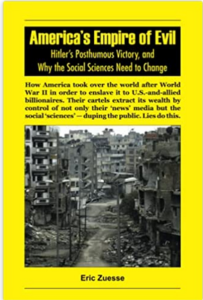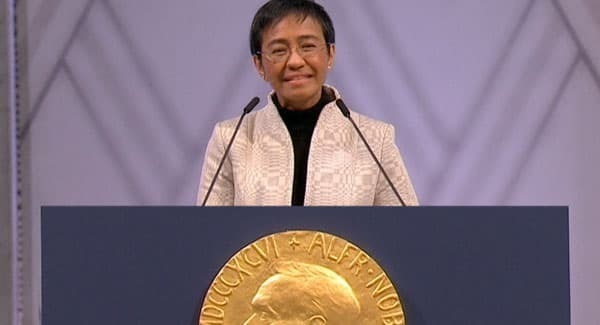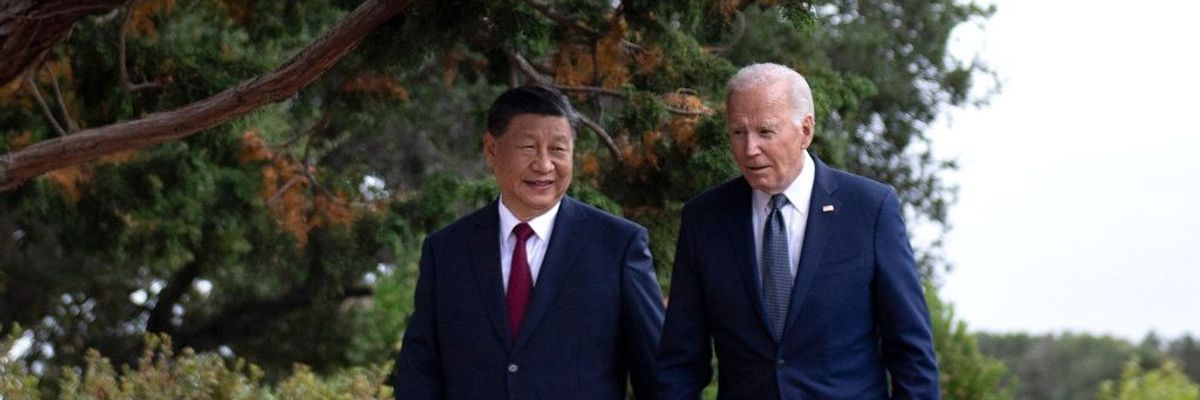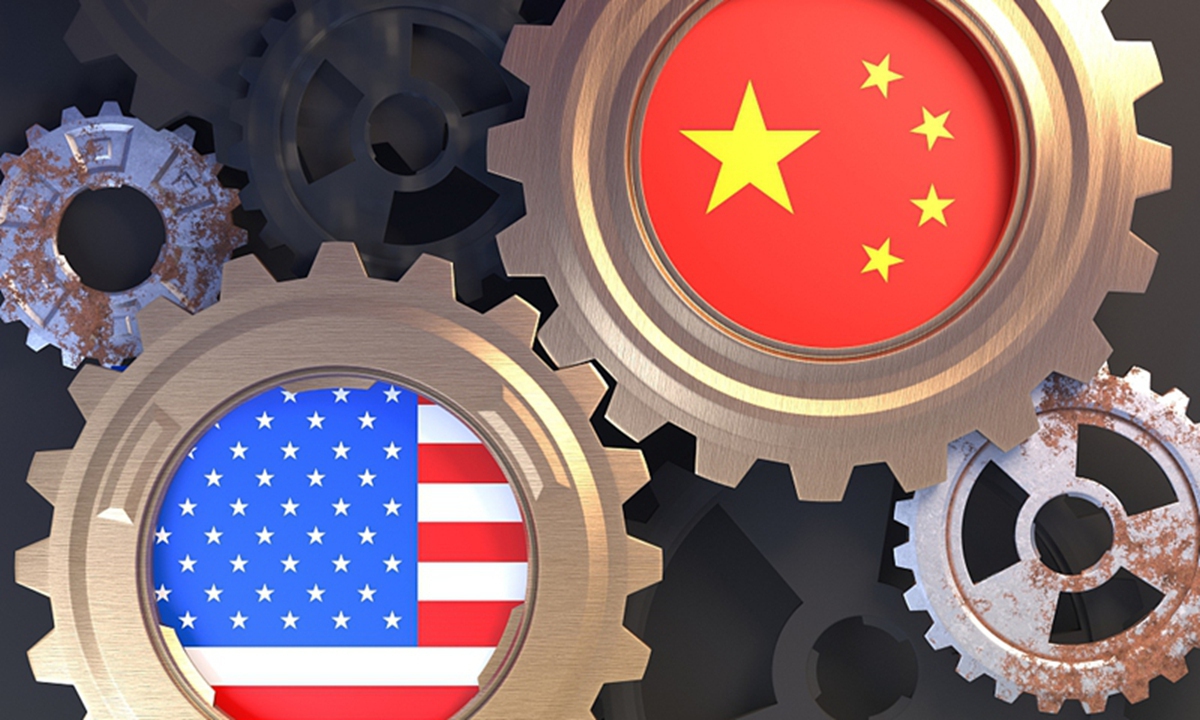The War on Korea (1950-53) was suspended with an armistice agreement. A hostile truce has persisted ever since. With respect to that ongoing confrontation, what Americans get from their government and their news mass media abounds with crucial omissions and misleading distortions resulting in a false portrayal of the geopolitical realities. Relevant history and essential facts.
- The Fight for National Independence
Korea was unified as a nation by the 10th century. During the last half of the 19th century, multiple invasions by foreign powers (US, France, Britain, and Japan) forced the country to allow foreign capital to enter and operate in Korea. [1]
In 1905, imperial Japan subjugated Korea as its Protectorate. In 1910, Japan proceeded to annex Korea, which it then ruled until 1945. While Japanese capital exploited the labor and natural resources of the country, the Japanese state banned use of the Korean language and customs in an attempt at forced assimilation. [1]
In 1919, the Korean independence movement organized mass rallies involving some 2 million protestors demanding independence from Japan. Japanese police and military forces crushed these protests with repressive violence causing some 7,000 fatalities. Independence leaders in exile then established the Provisional Government of the Republic of Korea [PGRK] which then obtained some limited international recognition and served until 1945 as an advocacy center for the independence movement. [1,2]
Between 1935 and 1940, the Northeast Anti-Japanese United Army [NAJUA], led by the Communist Party of China [CPC], conducted guerrilla operations against Japanese forces in Manchuria and Korea. Kim Il Sung, then a member of the CPC, obtained some distinction as an effective and popular division commander in the NAJUA. Japanese countermeasures forced Kim’s division, by the end of 1940, to escape into Soviet territory where they were retrained by the Soviet army. Kim then became an officer in the Soviet Red Army and was serving therein when the USSR joined the War against Japan (1945 August). During the interim, he was not present in Korea or China. Kim returned to Korea with Soviet forces in 1945 August. [3]
- Forced Prostitution
During the Asia-Pacific War (1941-45), Japan forced up to 200,000 Korean women (along with many more from other occupied countries) into sexual slavery to serve Japanese soldiers. During the Korean War (1950-53), the South Korean government re-established this system of forced sexual prostitution to serve South Korean and allied soldiers, the victims being conscripted almost exclusively from the ranks of the disempowered (worker and poor peasant) classes. This system persisted into the 21st century as a for-profit industry with sexual prostitution in “camp towns” (organized and regulated by the US and South Korean military authorities) around military bases. [4]
- How Korea Came to be Divided
As the Soviet Army was about to liberate Korea from 40 years of oppressive Japanese colonial rule, the US, wanting to prevent that country from falling under predominant Soviet influence, asked (1945 August 10) that Soviet forces stop at the 38th parallel so that the US would be able to occupy the southern half of the country. Hoping for a good postwar relationship, the USSR promptly agreed, with the expectation that this would be a temporary arrangement until the removal of Japanese forces and the establishment of an independent government for the whole country. Actual liberation began on August 14 with Soviet Red Army amphibious landings in the northeast of the country. US forces did not enter southern Korea until September 08, by which time Soviet forces would otherwise likely have occupied the entire country and disarmed all occupying Japanese forces. [5]
In August, popular People’s Committees affiliated with the Committee for the Preparation of Korean Independence [CPKI] arose throughout Korea. This organization was led by activists in country including: Lyuh Woon-hyung, and veteran Christian nationalist Cho Man-sik. On September 12, activists from the People’s Committees, meeting in Seoul (in US occupation zone), established the People’s Republic of Korea [PRK] to govern the country. The PRK program included:
- confiscation of lands held by Japanese and their Korean collaborators;
- distribution of that land to peasants;
- rent limits on all leased land;
- nationalization of major industries;
- guarantees for basic human rights and freedoms (speech, press, assembly, faith);
- universal adult suffrage;
- equality for women;
- labor law reforms (eight-hour day, minimum wage, prohibition of child labor, et cetera);
- good relations with US, USSR, China, and Britain; and
- opposition to foreign interference in affairs of state. [6]
Soviet authorities recognized the People’s Committees and PRK which then instituted progressive social reforms in the North [7]. Meanwhile, the US Army Military Government [USAMGIK] in the South: regarded said PRK and People’s Committees as unacceptably leftist, and suppressed them by military decree and armed force. USAMGIK also: put rightwing former Japanese collaborators in key power positions [6], and persisted in repressing reform advocates [7, 8]. Popular protests and localized rebellions followed [9]. By 1948 state repression in the South under USAMGIK had subjected dissidents to arbitrary detention, torture, and murder with thousands of victims [7, 9]. The US also chose rightwing anti-Communist, Syngman Rhee, as their man to govern the country [7, 10].
With the US and USSR deadlocked in disagreement over the content of a government for a united Korea, the US orchestrated the establishment (1948 August 15) of the Republic of Korea [ROK] with Syngman Rhee as President. Authorities in the North responded by establishing the Democratic People’s Republic of Korea [DPRK] on September 09 with Kim Il-sung as Premier. [5, 11, 12]
- What Happened to Democracy?
In the South, Rhee’s autocratic regime brutally persecuted Communists and other dissidents with detention, torture, assassination, and mass murder. Victims numbered in the tens of thousands. Repressive autocratic rule persisted in the South (with one brief reprieve) until 1987 when replaced by a liberal “democratic” regime with some semblance of civil liberties. However, government under this regime remains dominated by political parties which represent factions of a ruling capitalist class. Consequently, its “democracy” is illusory. [13, 14]
In the North, the People’s Committees constituted popular democratic institutions, which were already active when Soviet forces arrived. With Soviet backing, said Committees, with widespread popular support, constituted the governing authority. By 1946, the Soviet-backed (Communist) Workers’ Party had begun to dominate the Committees and the governing administration. Following the Korean War, Workers’ Party leader Kim Il Sung: purged other leading Communists (1952-62), replaced proletarian internationalism with Korean nationalism in Party doctrine, promoted a personality cult around himself, and created a hereditary dynastic autocracy, practices incompatible with Marxism and socialist participatory democracy. Thusly, the DPRK devolved into a dynastic bureaucratic welfare state, not capitalist, but also not actually socialist. [5, 11, 15]
- The War on Korea
Both Korean governments claimed the right to govern the entire country and had made preparations to enforce said claim thru military force. From 1949, there were border skirmishes, nearly all which began as incursions and/or artillery bombardments from the South into the North. In 1950 June, following a 2-day ROK cross-border bombardment and seizure of northern territory (including the city of Haeju) in the Ongjin area, the DPRK responded with a full-scale invasion of the South. The unpopular ROK regime collapsed, and DPRK forces quickly gained control of most of the South. [16, 10]
During its brief control in the South, the DPRK instituted progressive reforms (nationalization of industry, land reform, and restoration of the People’s Committees). According to US General William F Dean, “the civilian attitude seemed to vary between enthusiasm and passive acceptance”. [17]
The US, its allies, and their major news media, falsely characterized: the event as an unprovoked Communist aggression, the repressive ROK as a popular democracy, and the conflict as an international crisis (belying its reality as a civil war). The US, taking advantage of USSR boycott of United Nations [UN] meetings, induced said UN to authorize a US-led military intervention to save the ROK. Thusly, the US transformed the hitherto relatively-bloodless Korean civil conflict into the horrendous Korean War. Moreover, the US, by threatening to invade China and by bombing China’s territory and threatening hydropower stations serving its proximate industries, provoked China to enter the conflict on the side of the DPRK. [10]
Toll. The War took the lives of an estimated 3 million people, including some 1.6 million civilians, many of them as a consequence of indiscriminate US aerial bombing and war crimes perpetrated by US and allied forces. Said crimes included:
- massive US use of chemical weapons (especially napalm) in violation of the 1925 Geneva Convention;
- massive US use of bombing attacks upon civilian targets (cities and villages);
- deliberate destruction of crops and of food production infrastructure;
- massacres of many thousands of unarmed civilians by US armed forces under orders from high-ranking commanders at No Gun Ri and at many other locations (where US Army soldiers gunned down large crowds of civilians, or US airpower strafed and/or bombed them); and
- massacres of at least 100,000 Koreans by ROK police and army (as at Sancheong and Hamyang where ROK forces slaughtered 705 mostly women and children), at Koch’ang (where 719 persons of both sexes and all ages were mowed down by machine gun), and thru mass executions of rounded-up prisoners on mere suspicion that they might be unsympathetic to the repressive ROK regime.
Nearly all of the North and much of the South were reduced to rubble. [18, 10, 19]
Armistice signed in 1953 July left a hostile and uneasy truce with little net change in the control of territory, but no peace agreement. This condition persists to the present time. Moreover, foreign troops have not been stationed in the North since 1958, but US armed forces (in the tens of thousands) have never yet left the South. [20]
- Who First Introduced Nuclear Weapons?
The US deployed nuclear weapons in south Korea (in violation of the Armistice Agreement) from 1958 until 1991 (when it apparently decided that its interests would be better served with a prohibition of nuclear weapons in Korea). Moreover, US warships carrying nuclear weapons operate routinely in waters around Korea. [21]
With the (1991) collapse of its protective USSR ally and with continued hostility from the US and ROK, the DPRK (in 1993) announced its intent to withdraw from the Nuclear Non-Proliferation Treaty (NPT) and stepped up its efforts to develop a nuclear weapons capability as a deterrent. The DPRK suspended that withdrawal under the 1994 Agreed Framework whereby it agreed to remain in the NPT and to be monitored by the International Atomic Energy Agency [IAEA] in return for:
- light water nuclear power reactors to replace existing graphite nuclear power reactors (which were capable of easily producing weapons-grade plutonium),
- fuel oil deliveries to replace the power from shut down of the graphite reactors (until the light water reactors came on line),
- relief from sanctions,
- an end to threatening US-ROK military exercises, and
- movement toward normal diplomatic and economic relations.
It is now widely suspected that the US embraced the Agreed Framework on the assumption that the DPRK regime was on the verge of collapse which would mean no need for the US to fulfill its commitments. [22, 23]
The US did default on the agreement thru long delays in construction of the light water reactors which was years behind the targeted 2003 completion date. Then in 2002 the US further defaulted by ending delivery of promised fuel oil shipments. Further, the US falsely accused the DPRK of having confessed violation of the Agreed Framework by misinterpreting the DPRK’s assertion of having an inherent right to possess nuclear weapons as an admission of actual possession of such weapons. Finally, US President Bush: branded North Korea together with Iran and Iraq as an “axis of evil”; and then invaded Iraq where the US imposed regime change (followed by show trials and executions of deposed Iraqi leaders). The DPRK responded (in 2003) to the US default and intensified hostility by reactivating its nuclear reactors and by quitting the NPT. However, it offered to end its nuclear weapons program in return for security guarantees, but the US was unwilling to provide. [22, 23]
Repeated talks (2003-07) between the two sides failed to produce any lasting agreement. The Obama administration ratcheted up the threatening military exercises and ignored DPRK calls for talks to make peace. The DPRK has made six nuclear bomb tests (in 2006, 2009, 2013, 2016 January, 2016 September, 2017); and it has also developed an intercontinental ballistic missile [ICBM] capability. [20, 24]
The US, in 2017, deployed its THAAD anti-missile system in south Korea thereby further destabilizing the confrontation and also provoking alarm in China [25].
- The Current Danger
In 2011, the US and its allies used military force to oust the Gaddafi regime in Libya (after having used military force to effect regime change in Iraq in 2003). Both Iraq and Libya had given up their nuclear-weapons and other WMD programs. The DPRK drew the inevitable conclusion that it needed a nuclear weapons deterrent to protect itself against a similar event.
The US (with its imperial interventionist bi-partisan foreign policy consensus, arrogating to the US the “right” to use subversion, economic siege, military force, and any other available instrument in order to enforce its dictates against any country which insists upon following an insubordinate course) continues its hostility toward the DPRK. Under Biden, it persists in its aggressions against said DPRK: vilification, economic siege, annually conducting threatening US-ROK joint military exercises in the South (to which the DPRK responds by test-firing its missiles). The US refuses to discuss making a peace treaty or normalization of relations; it persists in its unwavering goal of regime change. In fact, the US has used its economic power to intensify international sanctions (economic siege) against the DPRK. Meanwhile, the obsequious (and/or negligently ignorant) mainstream news media misleads the public as to the realities of the confrontation; while the liberal left, if it responds at all, ignores US provocations and, tacitly or explicitly, accepts the mischaracterization of the DPRK as an aggressive “rogue” state.
Astute experts, including former US President Carter, have recognized that the current US policy, of attempting to coerce the DPRK to give up its nuclear deterrent while refusing to provide security guarantees, cannot succeed [4]. As long as the threat remains, the DPRK, regardless of who leads its government, will certainly not agree to give up the nuclear weapons deterrent which is its best insurance against military attack by an imperial US superpower bent upon regime-change. The way to ensure peace in the Korean peninsula is to remove the sanctions and other hostile measures against the DPRK including the provocative joint military exercises with the ROK.
The DPRK does not want war. It wants a peace treaty to finally end the Korean War. Its officials have asserted that it also wants Korea reunified under a federal system wherein the central government’s functions would be limited to national defense and foreign relations. Finally, the DPRK wants normal relations with the US and its neighbors; and, with that, it would, as it has repeatedly asserted, envision and welcome an end to hostile actions on both sides. [20, 22]
US government policy has never prioritized the welfare of the Korean people, North or South. Imperial hostility and pressure for regime change from outside forces, namely the US and its allies, has driven the DPRK regime to react with intensified repression of dissent. That then has operated to reinforce the bureaucratic rule and dynastic autocracy, which (along with economic siege and need to heavily invest limited resources in military deterrent) are contrary to the best interests of the people of the DPRK. Moreover, this US policy seriously threatens a catastrophic war which would devastate Korea and cause massive loss of life, South as well as North. The principal beneficiaries of this policy are: the munitions vendors; their supportive imperial-minded US politicians of both major parties (whose election campaigns are significantly funded by said munitions vendors); government officials (who will subsequently become corporate executives or lobbyists for the merchants of death) [26]; and the “experts” in policy institutes and academia (who make their careers as apologists for Western imperialism).
See also “The Entire Korean Peninsula as an American Satrapy?” and “North Korea Steadfastly Resisting US Hegemony.”
ENDNOTES
[1] Wikipedia: History of Korea (2023 Oct 17) ~ §§ Later Three Kingdoms, Foreign relationships, Korean Empire (1898-1910), Japanese rule (1910-1945).
[2] Wikipedia: Provisional Government of the Republic of Korea (2023 Oct 26) ~ §§ introduction, Foreign relations.
[3] Wikipedia: Kim Il Sung (2023 Nov 02) ~ §§ Communist and guerrilla activities, Return to Korea.
[4] Hynesᵒ H Patricia: The Korean War: Forgotten, Unknown and Unfinished (Truthout, 2013 Jul 12) @ https://truthout.org/articles/the-korean-war-forgotten-unknown-and-unfinished/ .
[5] Wikipedia: History of North Korea (2023 Sep 05) ~ § Division of Korea (1945—1950).
[6] Wikipedia: People’s Republic of Korea (2023 Oct 30).
[7] Cummingsᵒ Bruce: Korea’s Place in the Sun (© 2005, W. W. Norton & Company, New York & London) ~ pp 185—209  ISBN 0-393-31681-5.
ISBN 0-393-31681-5.
[8] Wikipedia: United States Army Military Government in Korea (2023 Oct 20).
[9] Wikipedia: Autumn Uprising of 1946 (2023 Oct 18).
[10] Blum⸰ William: Killing Hope – U.S. Military and CIA Interventions Since World War II (© 2004, Common Courage Press) ~ chapter 5  ISBN 1-56751-252-6. Note: 1st half, thru chapter 34, of 2003 edition is online @ http://aaargh.vho.org/fran/livres8/BLUMkillinghope.pdf .
ISBN 1-56751-252-6. Note: 1st half, thru chapter 34, of 2003 edition is online @ http://aaargh.vho.org/fran/livres8/BLUMkillinghope.pdf .
[11] Wikipedia: History of North Korea (2023 Sep 05) ~ § Establishment of the Democratic People’s Republic of Korea.
[12] Cummingsᵒ: ~ pp 209—17.
[13] Cummingsᵒ: ~ pp 217—24.
[14] Wikipedia: History of South Korea (2023 Nov 02) ~ §§ First Republic (1948—1960) thru Fifth Republic (1979—1987).
[15] Wikipedia: Workers’ Party of Korea (2023 Oct 27) ~ § History.
[16] Cummingsᵒ: ~ pp 247—264.
[17] Wikipedia: History of North Korea (2023 Sep 05) ~ § Korean War (1950—1953).
[18] Wikipedia: Korean War (2023 Nov 09) ~ § Casualties.
[19] Wikipedia: Geochang massacre (2023 Sep 07); Sancheong-Hamyang massacre (2023 Jun 04); No Gun Ri massacre (2023 Sep 22).
[20] Wikipedia: Korean Armistice Agreement (2023 Jul 27).
[21] Wikipedia: South Korea and weapons of mass destruction (2023 Oct 25) ~ § American nuclear weapons in South Korea.
[22] Sigalᵒ Leon V: Bad History (38North, 2017 Aug 22) @ http://www.38north.org/2017/08/lsigal082217/ .
[23] Wikipedia: “Agreed Framework,” 21 May 2023.
[24] BBC: North Korea: What missiles does it have? (2023 Sep 03) @ https://www.bbc.com/news/world-asia-41174689 .
[25] Borowiecᵒ Steven: THAAD missile system agitates South Korea-China ties (Nikkei Asia, 2023 Jun 22) @ https://asia.nikkei.com/Politics/International-relations/THAAD-missile-system-agitates-South-Korea-China-ties .
[26] Kuzmarov, Jeremy, “Senate Report: Nearly 700 Former High-Ranking Pentagon and Other Government Officials Now Work at the Top 20 Defense Contractors,” Covert Action Magazine, 2023 May 12 .
This post was originally published on Dissident Voice.


























 ISBN 0-393-31681-5.
ISBN 0-393-31681-5.



